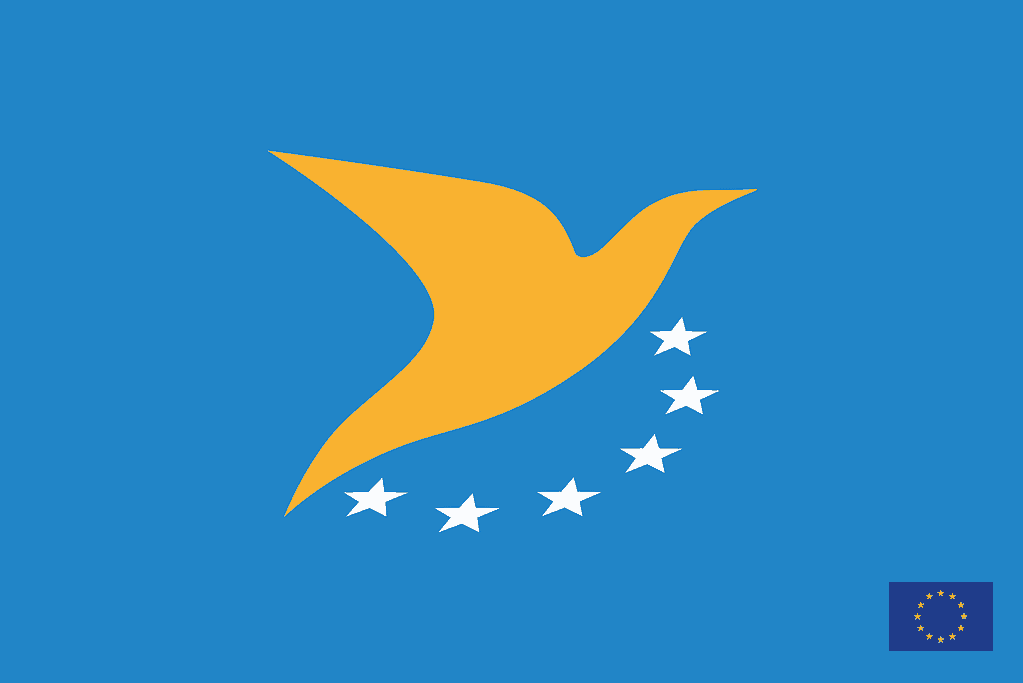The emergence of drones has opened up exciting possibilities. But with great innovation comes great responsibility. Recreational flyers and commercial operators alike, must understand Europe’s drone regulations. It is essential to staying safe and legal in the skies. One key component is the Specific Category for more advanced drone operations.
The following only applies to nations in Europe governed by the EASA regulations. See links to each country below.
What Makes the Specific Category Necessary?
Small drones have few restrictions in the Open Category. But larger and more complex drones need more diligence. The Specific Category covers higher-risk operations like:
- Flying drones over 25kg
- Operating beyond visual line of sight (BVLOS)
- Flying above 120 meters altitude
- Dropping materials from drones
- When operating a drone over 4kg in an urban location
- Operating a drone without a class identification label.
These operations need more oversight to maintain safety. The Specific Category provides a legal framework tailored to their unique risks.
Some drone operations go beyond the limitations of the open category. In those cases, you must use the ‘Specific Category’ or ‘Certified Category.’
Drone operators must register
All drone operators in the open category must register themselves (not the actual drone/s).
An operator registers once. If you are already registered as an operator, there is no need for you to re-register. That is the case even if you switch operations from the open to the specific category.
UAS operators must register in the European Country where they have their business. For natural persons, register where you have your residence.
Some Third-country operators have no primary business in an EASA Member State. You must register in the first EASA Member State where you conduct an operation.
Gaining Authorization for Commercial and Enterprise Users
There are four different ways to operate in the specific category:
- Submit a declaration based on a Standard scenario (STS);
- Get an operational authorization following a Predefined Risk Assessment (PDRA);
- Get an operational authorization without a PDRA;
- Have a Light UAS Operator Certificate (LUC).
To fly in the Specific Category, operators must get authorization. The authorization is granted by the National Aviation Authority (NAA). There are a few exceptions:
- Flights under published Standard Scenarios (STS) only require a declaration.
- Operators certified through a LUC may self-authorize certain flights.
The regulators have recognized several Predefined Risk Assessments (PDRA). A PDRA simplifies the authorization process. It is especially useful for everyday drone activities. These include agriculture, infrastructure inspection, and delivery.
For custom operations, the PDRAs may not cover what you want to do. In that case, use a Specific Operations Risk Assessment (SORA). It will help determine required risk mitigations and objectives. Authorization permits flights within defined limitations across Europe.
Ensuring Drone Designs Meet Safety Requirements
Higher-risk operations mandate stricter design standards. While declarations of compliance suffice for lower-risk flights, Safe operations may need:
- Design Verification Reports (DVRs) assessing drones against safety requirements or
- Formal certification for intrinsically hazardous operations
DVRs provide a pragmatic middle ground between declarations and full certification.
Operating Responsibly Across Borders
The Specific Category enables pan-European drone operations. You first receive authorization from your home NAA. Your operators can then conduct flights in other EASA countries. They do so by notifying the local NAA.
Standardized regulations allow seamless operations across borders. This is especially true when using established PDRAs or STS procedures. But understanding local conditions remains important for safe, successful flights.
An Evolving Framework for Complex Drone Operations
Drones are proliferating rapidly. Europe’s Specific Category strikes a prudent balance between innovation, safety, and standardization. It provides sophisticated operators with a structured route to authorization. And it does so through proportionate diligence and oversight.
By proactively addressing emerging risks, Europe’s pioneering drone regulations uphold high standards. It also allows cutting-edge applications. For businesses exploring advanced drone capabilities, the Specific Category is an enabling framework. It will help you push boundaries responsibly.
Take to the Skies Safely
For both recreational and commercial drone pilots, understanding local regulations is essential. The drones are become increasingly capable and sophisticated. So too must the diligence of their operators. The Specific Category allows users to explore drones’ immense potential safely and responsibly.
FAQs
What exactly is an STS?
The European Standard Scenario (STS) is a predefined operation. It is included in Appendix 1 to Regulation (EU) 2019/947, which will take effect on January 1, 2024.
It is one of several options for operators to begin their operations.
Operators are not required to get operational authorization for an STS operation.
First, determine whether the operation can fits under an STS.
If this is the case, submitting a declaration of the state of registration to the NAA is enough.
Two EU STSs have been published so far;
- STS 01 – VLOS over a controlled ground area in a populated environment;
- STS 02 – BVLOS with Airspace Observers over a controlled.
To fall under an STS, the operation must follow all the requirements defined in the actual STS.
What exactly is a PDRA?
The PDRA is an operational scenario which EASA has already assessed the risk. It is published as an acceptable means of compliance (AMC). It meetsthe requirement of Regulation (EU) 2019/947 Article 11 (risk assessment).
The PDRA still requires NAA operational authorization. However, the procedure will be significantly simplified.
Suppose the planned operation is covered by one of the published PDRAs. In that case, the UAS operator can fill out the PDRA table. They prepare the operator manual, and submit the registration application to the NAA.
The PDRA table is essentially a checklist. It is used for developing the procedures that must be included in the operator manual.
In addition, the NAA’s review of documentation will be streamlined.
EASA has published five PDRAs:
- PDRA S-01 – Agricultural works, short-range cargo ops
- PDRA S-02 – Surveillance, agricultural works, short-range cargo ops
- PDRA G-01 – Surveillance, long-range cargo ops
- PDRA G-02 – All range of opsPDRA G-03 – Linear inspections, agricultural works
- PDRA G-03 – Linear inspections, agricultural works
What exactly is a LUC?
The LUC is an optional operational certificate. It grants the holder certain privileges.
The highest privilege to a holder is being able to begin operating in a specific category. They can do so without first getting operational authorization from the NAA.
LUC certification significantly improves the efficiency of drone aerial services. It does so, while also ensuring safety.
We all save many working hours by expediting the process. Otherwise one would halt all work while authorization is formalized and approved.
Where do EASA rules apply?
The European Commission and the EASA (European Union Aviation Safety Agency) European regulation apply to 31 countries. EASA Member states are the 27 European Union Countries plus Iceland, Liechtenstein, Norway, and Switzerland.
On the following country pages, you will find links to the National Civil Aviation Authority, the online drone licence site, drone registration links, sites for operational authorisation, locations to check for controlled airspace, no-fly zones, etc.
- Austria Drone Laws – Austro Control
- Belgium Drone Laws – Federal Public Service Mobility and Transport
- Bulgaria Drone Laws – Directorate General Civil Aviation Administration
- Croatia Drone Laws – Croatian Civil Aviation Agency
- Cyprus Drone Laws – Cyprus Department of Civil Aviation
- Czech Republic Drone Laws – Czech Republic Civil Aviation Authority
- Denmark Drone Laws – Denmark Civil Aviation Administration
- Estonia Drone Laws – Estonia Civil Aviation Administration
- Finland Drone Laws – Finnish Transport Safety Agency
- France Drone Laws – French Civil Aviation Authority
- Germany Drone Laws – German Federal Aviation Office / Deutsche Flugsicherung
- Greece Drone Laws – Hellenic Civil Aviation Authority
- Hungary Drone Laws – General Directorate for Air Transport
- Iceland Drone Laws – Icelandic Transport Authority
- Ireland Drone Laws – Irish Aviation Authority
- Italy Drone Laws – Italian Civil Aviation Authority
- Latvia Drone Laws – Civil Aviation Authority of The Republic of Latvia
- Liechtenstein Drone Laws – Landesverwaltung Liechtenstein Division Civil Aviation
- Lithuania Drone Laws – Civil Aviation Authority of the Republic of Lithuania
- Luxembourg Drone Laws – Directorate of Civil Aviation
- Malta Drone Laws – Malta Civil Aviation Directorate
- Netherlands Drone Laws – Civil Aviation Authority
- Norway Drone Laws – Civil Aviation Authority Norway
- Poland Drone Laws – Civil Aviation Authority Poland
- Portugal Drone Laws – National Civil Aviation Authority
- Romania Drone Laws – Romanian Civil Aviation Authority
- Slovakia Drone Laws – Civil Aviation Authority of the Transportation Office
- Slovenia Drone Laws – Civil Aviation Administration of Slovenia
- Spain Drone Laws – Agencia Estatal de Seguridad Aerea
- Sweden Drone Laws – Swedish Transport Agency
- Switzerland Drone Laws – Federal Office of Civil Aviation
- For other European countries not part of the European Union or governed by EASA, see Drone Laws In European Countries – from there, you can navigate to the specific country not included in EASA rules.
NOTE: This page is about the Regulation of Unmanned Aerial Vehicles: Small Unmanned Aerial Systems (SUAS), Small UAS, Remote Piloted Aerial Systems (RPAS), unmanned aerial vehicle (UAV), Unmanned Aerial System (UAS), and drone are interchangeable terms unless specified. Model Aircraft, toy, remote-controlled, and RC aircraft may be covered by the same regulations unless specified.
Find out why
We think you must use a Drone Preflight Checklist
And a Drone Post-flight checklist
Free Drone Flight Checklist PDF
This Drone Flight Checklist is better than others.
It’s free!
It includes both the preflight checklist and post-flight checklist
It’s an easy-to-use printable PDF that covers all your bases.
Traveling with a Drone?
Click here to read our Comprehensive Guide For Traveling With A Drone.
NOW IT’S YOUR TURN



Leave a Comment